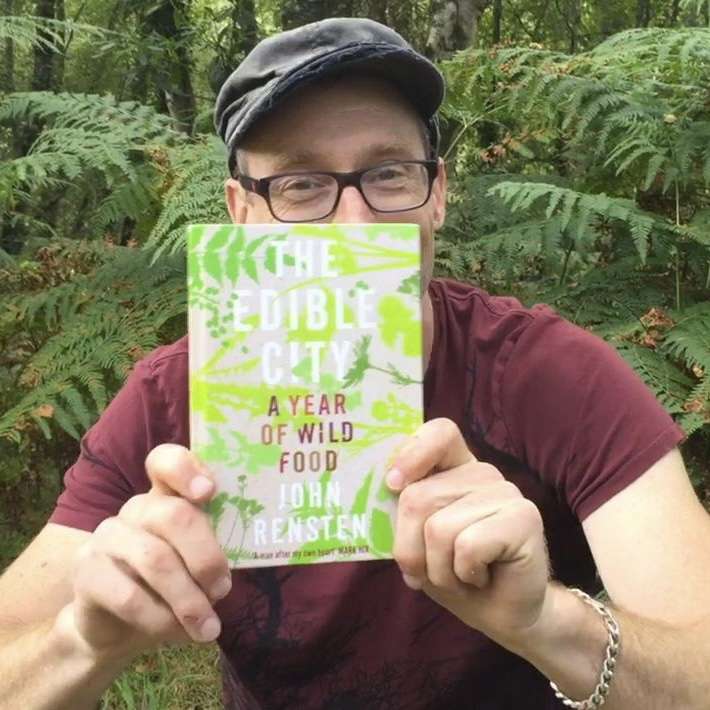 What is a super food anyway? It’s one of those popular terms that gets over used by companies trying to sell “healthy ” foods and with the mass food industry having wandered so far from the path these days, the idea of food being good for you is actually a selling point, rather than a given. So, back to nature we go, where all the wonderful nutrition we need is still waiting for us in abundance and all we have to do is take it (Hooray). The definition of a super food is approximately this : Any food that is extremely rich in minerals and vitamins, particularly beneficial to health and containing much higher levels of anti oxidants and enzymes than other foods, hence being excellent at supporting digestion, healing, detoxification, alkalisation, nutrient absorption, aiding fertility etc etc. Below I have written about five very common plants that I consider to be super foods. All are easily foraged but I have picked food that’s also readily available in the shops, so no excuses for not getting your fill. These could be joined by maybe another fifteen or so items that are part of our commercial food chain, however, were I to write a list of wild super foods it would be pretty much endless. It’s not that I am so anti mass production, when massive cities have massive appetites, I appreciate that the food has to come from somewhere (but the problems and solutions to these problems are political so well out of my sphere of knowledge). For me, wild food is all super food and although it has not been created to necessarily look good, last long or travel well, mixing and matching some wild plants into a normal diet is a brilliant way to boost health while getting involved in the process of properly sourcing ones own food….and equally importantly, foraging is fun. So, first on the list….
What is a super food anyway? It’s one of those popular terms that gets over used by companies trying to sell “healthy ” foods and with the mass food industry having wandered so far from the path these days, the idea of food being good for you is actually a selling point, rather than a given. So, back to nature we go, where all the wonderful nutrition we need is still waiting for us in abundance and all we have to do is take it (Hooray). The definition of a super food is approximately this : Any food that is extremely rich in minerals and vitamins, particularly beneficial to health and containing much higher levels of anti oxidants and enzymes than other foods, hence being excellent at supporting digestion, healing, detoxification, alkalisation, nutrient absorption, aiding fertility etc etc. Below I have written about five very common plants that I consider to be super foods. All are easily foraged but I have picked food that’s also readily available in the shops, so no excuses for not getting your fill. These could be joined by maybe another fifteen or so items that are part of our commercial food chain, however, were I to write a list of wild super foods it would be pretty much endless. It’s not that I am so anti mass production, when massive cities have massive appetites, I appreciate that the food has to come from somewhere (but the problems and solutions to these problems are political so well out of my sphere of knowledge). For me, wild food is all super food and although it has not been created to necessarily look good, last long or travel well, mixing and matching some wild plants into a normal diet is a brilliant way to boost health while getting involved in the process of properly sourcing ones own food….and equally importantly, foraging is fun. So, first on the list….
1. GARLIC.
We have a few types of wild garlic in the UK, Ransoms, Three Cornered Leek, Crow garlic and various other edible members of the Allium genus. All of them equipped with numerous health enhancing properties, more so than any other easily available and delicious food I can think of. Garlic has the wonderful (and possibly unique) ability to turn “bad” cholesterol (LDL) into “good” cholesterol (HDL), to reduce blood pressure and to stabilise blood sugar levels. It’s also a very good natural antibiotic, an antiseptic and a natural expectorant (helping to thin and clear mucus). If that wasn’t enough, garlic is an excellent aid to detoxification which in turn helps to support the liver. It does this by binding with and then “destroying” heavy metals. Furthermore, garlic boosts and supports the immune system, draws out colds by drying the lungs and acts as an anti microbial and anti fungal to fight parasitic infections. WOW! And it tastes fantastic and has a multitude of culinary uses.
2. HAWTHORN.
Obviously nothing like as popular a food as garlic, but in plentiful supply all over our country largely due to The Enclosures Acts of the 1800s (a series of acts of parliament which enclosed open fields and common land to remove the rights of local people to grow crops, graze animals, collect timber and turf etc with hawthorn used to make thousands of miles of hedges to enforce this). Apart from having tasty blossoms and young leaves, Hawthorn makes excellent jellies and jams, a lovely brandy and a traditional spring pudding, but it’s success as a medicinal herb far out weighs it edible uses. Rich in flavonoids (plant anti oxidants that combat infections and viruses), Hawthorn is an excellent all round heart tonic. It acts like a natural beta blocker regulating the heart beat by helping more oxygen into the arteries as well as relaxing the heart muscle, reducing collagen, lowering the blood pressure and keeping the arteries clear. It can be taken in tablet form, as a decoction (boiled in water) or most effectively as a tincture (where alcohol is used to extract the active ingredients).
3. NETTLE.
I am always banging on about the edible and medicinal virtues of Stinging Nettle and with good reason. Delicious in soups (especially with wild garlic), omelettes, tarts, nettle aloo (in fact any dish where spinach would normally feature) or just as a steamed or wilted vegetable in it’s own right. Last but definitely not least is the wonderful nettle beer (not the horrid hippy brew it sounds like but a delicious cross between cider and sweet wine, not really a beer at all). The tiny formic acid filled hairs that cover the stinging leaves, “melt” when cooked, but I would not recommend them in a salad unless you want a very swollen mouth. Nettles are a massive 40% protein. For the same amount in a single portion of nettles you’d need an entire sink full of kale. Also they are rich in potassium, vitamin A, anti oxidants and silica which helps promote hair growth. Lastly they are jam packed full of iron so excellent for vegetarians, anemia sufferers or during pregnancy.
4. ROSE.
Wild Rose, Dog Rose, Japanese Rose, Field Rose or Garden Rose. It makes no difference really. They all taste great and are wonderfully good for you. Weight for weight, rose hips contain 20 times the vitamin C of oranges. YES, TWENTY TIMES! That’s enough reason to eat them without writing another word. However, roses also contain masses of pectin which aides detoxification, helps treat bowel problems and acts as a demuculent (used in throat lozenges). Used as a source of vitamin C during WWII when supplies of citrus fruit were cut off to the UK, roses also contain high levels of anti oxidants, easily identified in these and numerous other plants with red fruits as well as vitamin A and B and essential fatty acids. Rose hip syrup is a wonderful way to get the best out of roses and is so simple to make. Many old recipes use large amounts of sugar, more as a preservative than anything else but I find it better to use far less and freeze the syrup I make, adding sweetness to taste further down the line. Obvious other uses are in jellies, jams, turkish delight, rose wine, brandy and vinegar.
5. BLUEBERRY.
The wild version is known as Bilbery, Blaeberry or Whortleberry and comes into fruit around late June. It likes to live on dry heathland soil which is found mostly in acidic upland areas. Wild blueberries in the UK are quite small compared to the plump but air mile laden versions that our supermarkets are full of (I’m not getting on my high horse here, I eat masses of them) and as this is a foraging blog, I feel ashamed to mention the G word (gardening) but I must for once, as these grow amazingly well in pots and with little or no skill I have had great success producing tons of them. Foraging for blueberries is a rewarding, if rather slow pursuit but one I do every year at least once (if for nothing else, to assuage my guilt over the amount of mass produced ones I consume) and this year I intend to use them to finally make the traditional Yorkshire dish, Mucky Mouth Pie! Health wise blueberries tick all the boxes containing a huge range of micronutrients (trance minerals) as well as copious amounts of vitamin C, vitamin K, manganese and anti oxidants. They help lower cholesterol and blood sugar..and they taste fantastic.

Hi John,
I’m surprised you find all roses equally good where you live. In the Northeastern US, by far the most common wild species are the multiflora rose, Rosa multiflora, and the wrinkled rose, R. Rugosa. The latter is far superior. The fruit is large enough that after you steep it for tea, it’s easy to remove the seeds from the cooled hips, and use the apricot-like fruit in any number of recipes that call for pulpy fruit. The multiflora rose has a tiny, seedy hip, suitable only for making tea.
I cover all this in my app, Wild Edibles.
We have hawthorns here too, along with a variety of Alliums (the ramp, A. tricoccum, being the best), and 2 common species of blueberries.
In addition to stinging nettle, Urtica dioca, we have wood nettles, Laportea canadense, and slender nettles, U. gracilis growing here. They’re just as good as stinging nettle. Do you have more than species of true nettles?
Always fun comparing notes with you!
Happy Foraging!
“Wildman” Steve Brill
Hi Steve, When I say all roses are equal I only mean from a nutritional point of view ( and I may be wrong about that)..flavour wise the wild and dog rose hips here have a terrific taste but I prefer the Japanese because I’m basically lazy and it’s so much easier to get a basket full…..Re your point about Urticaceae…”Mind your own business”..No , i’m not being rude, this is the wonderful common name here for Soleirolii , one of the four members of that family in the UK..not that I have ever seen this…we also have U.urens and P.diffusa but that’s all….lastly, in a previous post you mention broadleaf dock….do you eat this? do you have any tips for me? Thank you so much for taking an interest in what I’m doing. The next time I get to the US (if there is a next time) it will be on a wild food pilgrimage and I will be coming to kidnap you for a day..all the best
john